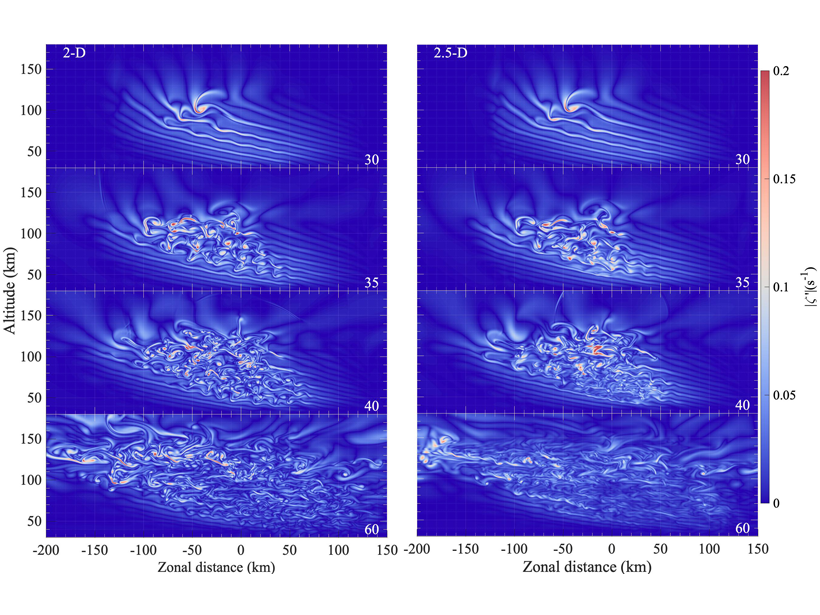Source: Journal of Geophysical Research: Atmospheres
Small-scale gravity waves play a major role for the transports of energy and momentum from the lower to the upper atmosphere, and strongly impact upper level circulations. However, the details of gravity wave behavior and interactions across scales are complex and poorly understood.
Dong et al. [2020] make a new contribution to understanding gravity waves in the upper atmosphere from high-resolution numerical simulations. The simulations are the first to describe the propagation, breaking, and the resulting secondary generation of waves throughout the whole middle atmosphere and into the lower thermosphere (up to 260 kilometers altitude).
A rich phenomenology is revealed, raising fundamental questions about which phenomena matter for the coupling of different atmospheric layers. The results are leading to improved understanding of coupling of the lower and upper atmosphere.
Citation: Dong, W., Fritts, D. C., Lund, T. S., Wieland, S. A., & Zhang, S. [2020]. Self‐acceleration and instability of gravity wave packets: 2. Two‐dimensional packet propagation, instability dynamics, and transient flow responses. Journal of Geophysical Research: Atmospheres, 125, e2019JD030691. https://doi.org/10.1029/2019JD030691
—William J. Randel, Editor, JGR: Atmospheres
Text © 2020. The authors. CC BY-NC-ND 3.0
Except where otherwise noted, images are subject to copyright. Any reuse without express permission from the copyright owner is prohibited.

